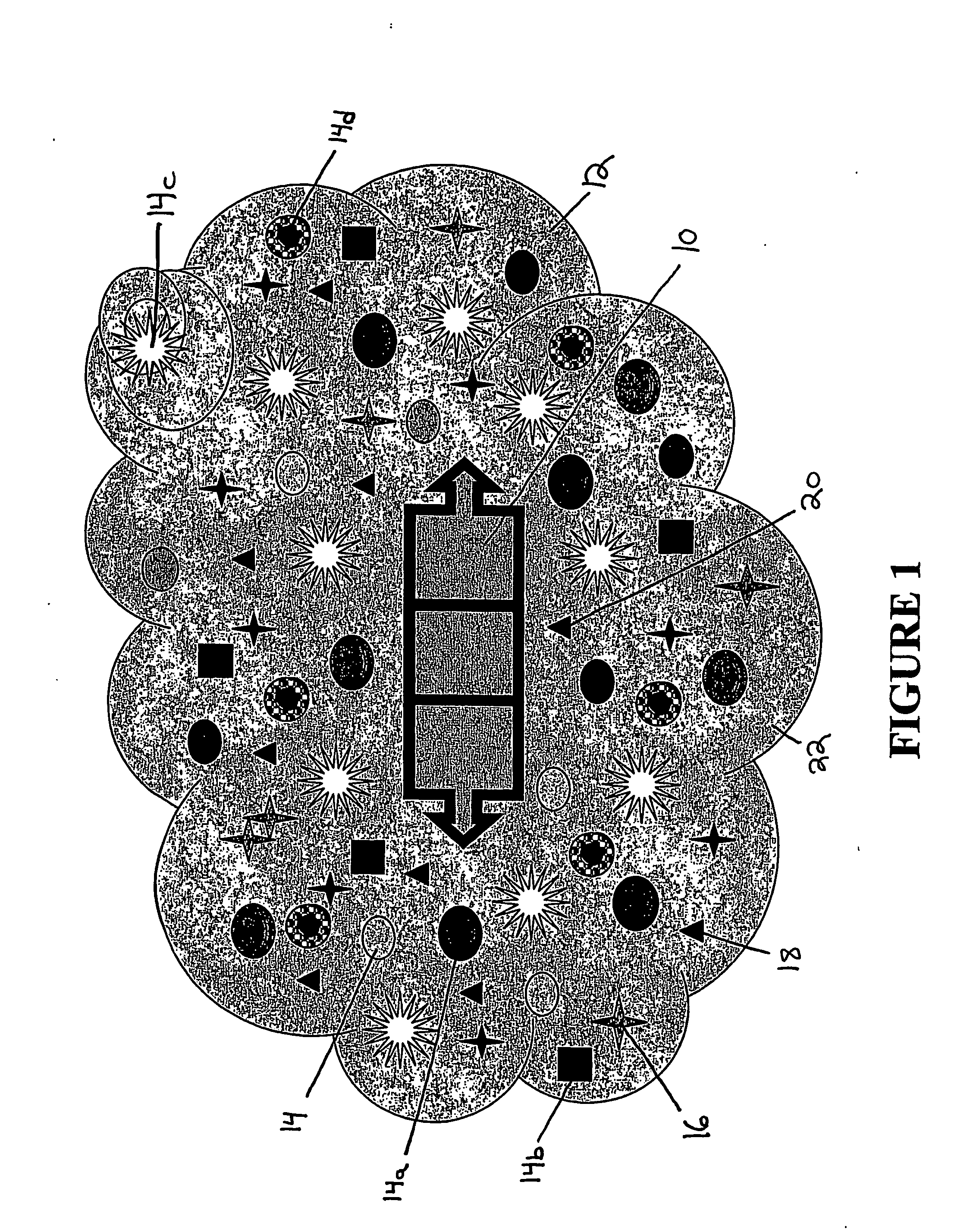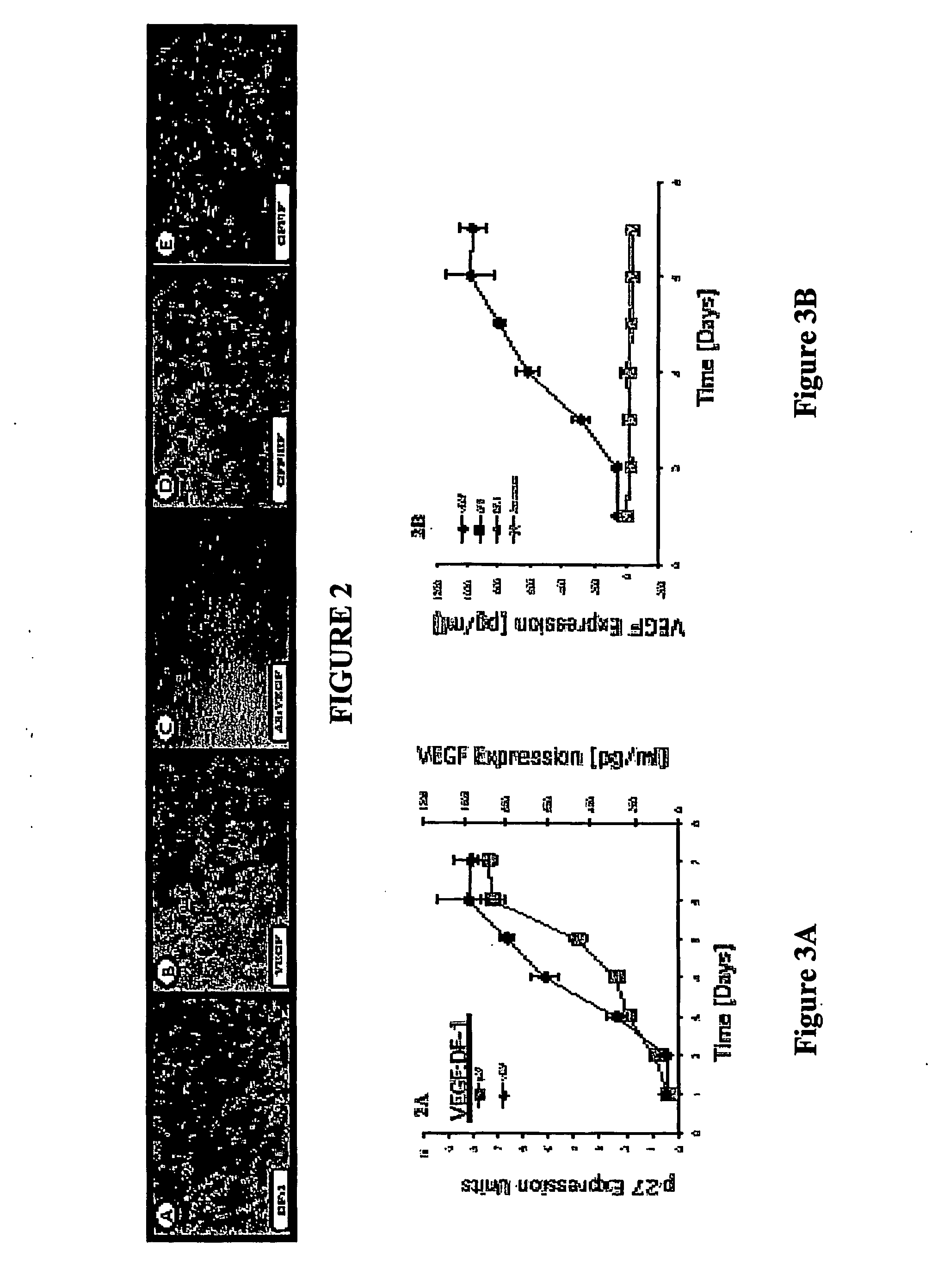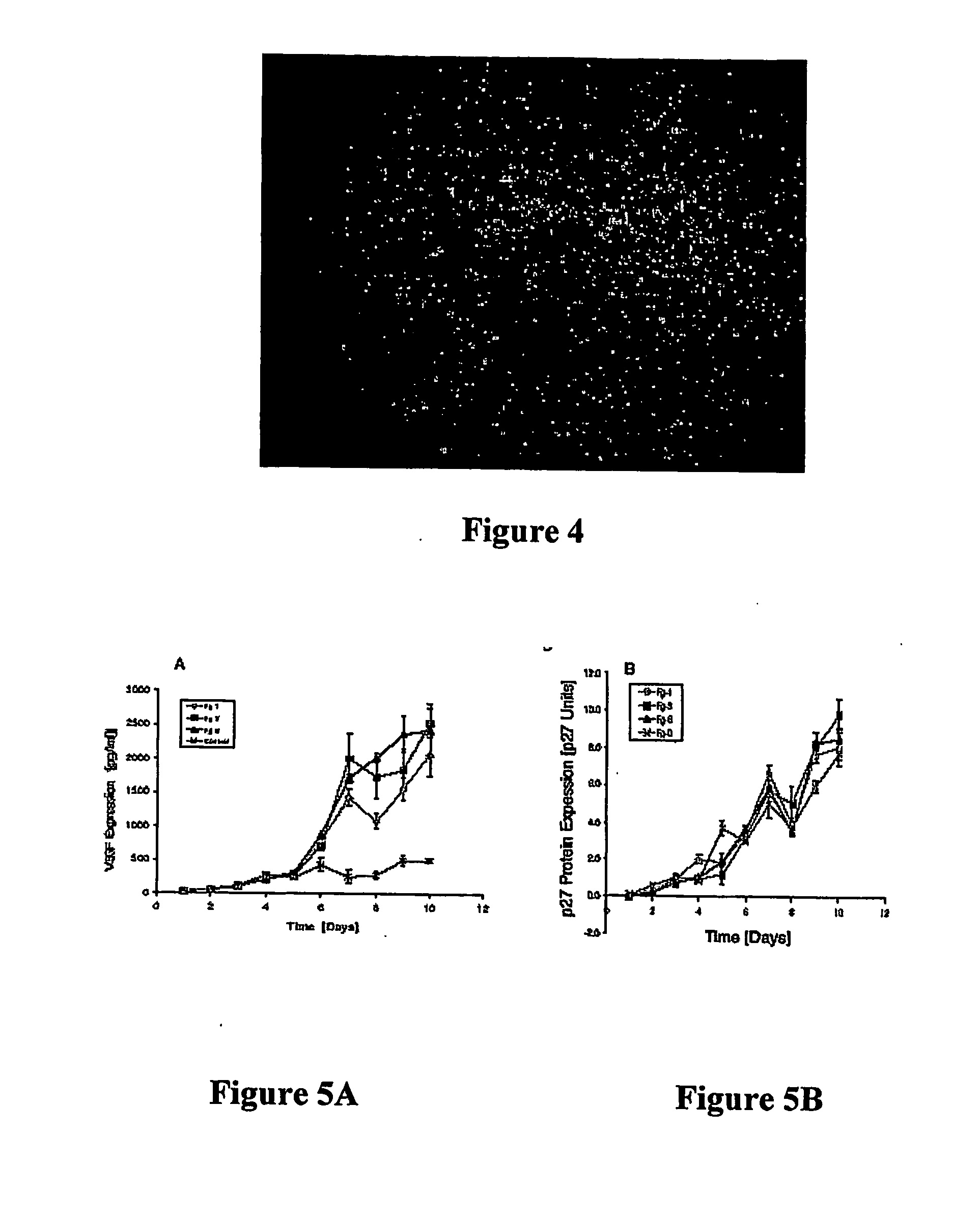Article tissue systems and uses thereof
- Summary
- Abstract
- Description
- Claims
- Application Information
AI Technical Summary
Benefits of technology
Problems solved by technology
Method used
Image
Examples
experimental examples
[0098] In one embodiment of the invention, a gene transfer system is included wherein a genetically engineered cell suitable for use in the ATS is produced. For example, as experimentally shown, a Rous Sarcoma Virus Vector Model for Gene Transfer was created wherein a helper-independent retroviral vector, RCAS, derived from Rous Sarcoma Virus (RSV) was used for gene transfer in the in vitro and ex ova CAM model studies. A mouse VEGF gene (mVEGF), genebank number M25200, said genebank disclosure incorporated fully herein by reference and associated with the sequence as shownin in FIG. 22, was inserted into the RCAS proviral plasmid vector in both “sense”and “antisense” orientations using standard recombinant DNA manipulations. Specifically, a 908 bp Taq I fragment containing the mVEGF open reading frame was mobilized from pBSK+mVEGF and ligated into the unique CIa I site of the RCAS-BP(A) proviral vector plasmid. The ligation products were screened by restriction mapping and both sen...
PUM
 Login to View More
Login to View More Abstract
Description
Claims
Application Information
 Login to View More
Login to View More - R&D
- Intellectual Property
- Life Sciences
- Materials
- Tech Scout
- Unparalleled Data Quality
- Higher Quality Content
- 60% Fewer Hallucinations
Browse by: Latest US Patents, China's latest patents, Technical Efficacy Thesaurus, Application Domain, Technology Topic, Popular Technical Reports.
© 2025 PatSnap. All rights reserved.Legal|Privacy policy|Modern Slavery Act Transparency Statement|Sitemap|About US| Contact US: help@patsnap.com



